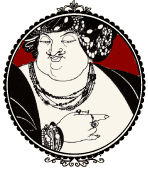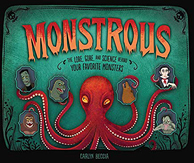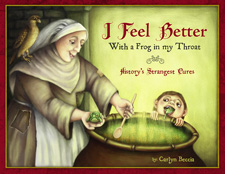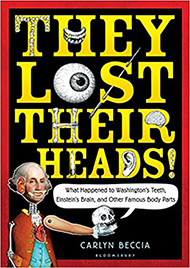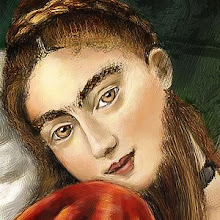Last week I guest blogged at Frog on a Blog about the science behind the legendary El Chupacabra. Is this monster real or is it a canine creature suffering from a real disease? Learn the lore, gore, and science behind this legendary monster….
Monday, September 16, 2019
Monday, September 9, 2019
How to Survive Monster (or animal) Attacks
Killer Bees
Killer bees, otherwise known as Africanized Honey Bees are tiny little mercenaries with no forgiveness. They are deadly not because of their poison but because they swarm in such exceptionally large numbers that they can carpet your body in seconds. To survive do the following:
1. Run. Do not swat at the bees. Bees are attracted to movement. As you run, pull your shirt over your face.
2. Seek shelter. Don’t bother going underwater. Bees have nothing better to do but wait for you to emerge and then start stinging you again.
3. Take out the stingers with the flat edge of a credit card to prevent the spread of venom. Be careful not to push the stingers in further.
Killer bees, otherwise known as Africanized Honey Bees are tiny little mercenaries with no forgiveness. They are deadly not because of their poison but because they swarm in such exceptionally large numbers that they can carpet your body in seconds. To survive do the following:
1. Run. Do not swat at the bees. Bees are attracted to movement. As you run, pull your shirt over your face.
2. Seek shelter. Don’t bother going underwater. Bees have nothing better to do but wait for you to emerge and then start stinging you again.
3. Take out the stingers with the flat edge of a credit card to prevent the spread of venom. Be careful not to push the stingers in further.
In MONSTROUS I advised to never EVER mess with a baby bigfoot or “littlefoot” because there is always going to be a mother bigfoot not far behind. The same is true for mother grizzly bears. If you happen to find yourself being mauled by an angry grizzly, you should:
 |
| We kill with cuteness. |
1. Take an existentialist moment to ponder why you don’t have the self-restraint not to pet baby animals in the wild.
2.
This survival technique is called "death feigning" or thanatosis
and is used by several animals to avoid predators. One example of thanatosis is female
dragonflies who will often drop out of the sky and fall to the ground in an Oscar-worthy death scene. This melodramatic hi-jinx is to avoid aggressive males
when they are um…not feeling the romantic urge. This faking
death trick works on male dragonflies 60% of the time.(1) And
like I always say….what works with dragonfly copulation has to work when
surviving imaginary beasts.(2)
 |
| This is what a dragonfly looks like when not in the mood. |
Black Bear
Do NOT play dead. Black bears won’t fall for that nonsense.
Instead, fight hard. Like way harder than Brad Pitt did in the Legends of the Fall and a tiny bit harder than Leonardo DiCaprio did in The Revenant. (I
personally thought he should have won that one.)
Better yet, try to avoid the darn bear in the first place.
Here is a helpful graphic from the book:
 |
| A page from MONSTROUS: The Lore, Gore, and Science behind your Favorite Monsters. What works on Bigfoot will also work on some bears. |
Monkeys
Readers of this blog know how much I mistrust monkeys. And
unfortunately, angry macaque attacks are not the stuff of fiction. Experts say most
monkey attacks occur when the monkey thinks you are keeping food from them.
This is why you should never spill pasta sauce on your shirt and then hang out
with hungry macaques. Signals can get crossed.
 |
| If I show my teeth, I am either yawning or about to rip your face off... |
But if you do find yourself being bullied by a pack of
monkeys. First, remain calm. You must be smarter than the monkey. Like I advise
in the King Kong chapter of MONSTROUS, do not look an angry primate in the eye.
This is seen as an act of aggression and will enrage them further. Instead,
hold out your hands to show you are not hiding delicious snacks. If you are
withholding delicious snacks….give em’ up. Your lunch is not worth contracting
Herpes B.
 |
| A page from the Kraken chapter of MONSTROUS. Communicating correctly with a Giant Octopus is vital for survival. |
First off, if you ever find yourself facing a hungry Great
White….I am really sorry. That's a rough day at the beach. Sure. Sure. Sure. All the
shark experts say shark attacks are rare. Blah. blah. blah. Shark attacks are
rare because most species of sharks have no desire to eat humans. Shark
attacks are usually caused by mistaken identity – they think you are a yummy seal or
some other more appetizing snack.
Still, unprovoked shark attacks are on the rise and this is because most sharks think we are jerks. (3) Sharks don't like us because they cause less than 4 fatalities per year while humans kill 100 million sharks per year. (4) Seems like an opportune time to even the score to me.
So, If you do find yourself in shark-infested waters here is how to survive.
So, If you do find yourself in shark-infested waters here is how to survive.
1. You must remain calm. That old adage about
sharks attracted to a single drop of blood is true. But what is also true is
that many species of sharks are attracted to fear. They cannot smell it like
blood but they are sensitive to electrical fields and will hear your fluttering
heartbeat like a dinner bell. So ya, slow your heartbeat. Again, good luck
with that.
2. Follow the shark etiquette. Do not turn your
back on the shark and do not make any sudden movements. You do have some time. Most sharks do not just go up to humans and clamp their jaw down. That’s
just rude. First, they will bump into you to determine if you are edible.
3. Punch the shark. But not in the nose. Because that will put your fist dangerously close to its teeth. If the shark does find you
worthy of a tasting, shark experts advise you punch the shark in the gills or eyes. Again, good luck with that.
4. Get out of the water. Well, duh.
I will leave you with this reassuring imagery….
 |
| Sharks are watching....and waiting |
Legal Disclaimer:
Neither MONSTROUS or this blog is meant to be medical advice or really any sound advice on any subject matter. If you find you have been attacked by a werewolf or other monster, you should seek out a medical professional and not an author. (At least before the full moon...)
Neither MONSTROUS or this blog is meant to be medical advice or really any sound advice on any subject matter. If you find you have been attacked by a werewolf or other monster, you should seek out a medical professional and not an author. (At least before the full moon...)
[1] Results are mixed in humans.
[2] Actually, I rarely get to say that. Mostly because there is not a huge market for dragonfly copulation in children's books.
[3] I completely made that up. No one has interviewed a shark to date and experts really don’t know why shark attacks are on the rise. Some explanations include; greater human populations along coastlines, the destruction of habitat, changing water quality, climate change and shifts in prey distribution or……sharks think we are jerks.
[4] McKeever, William. Emperors of the Deep. NY: New York, HarperOne, 2019, 5.
[5] I limited my food references in this post. It took a lot of restraint.
[3] I completely made that up. No one has interviewed a shark to date and experts really don’t know why shark attacks are on the rise. Some explanations include; greater human populations along coastlines, the destruction of habitat, changing water quality, climate change and shifts in prey distribution or……sharks think we are jerks.
[4] McKeever, William. Emperors of the Deep. NY: New York, HarperOne, 2019, 5.
[5] I limited my food references in this post. It took a lot of restraint.
Sunday, September 8, 2019
MONSTROUS is in stores!!!
 |
| That is the Kraken. He isn't that scary once you learn the science behind him. |
Due to needing to focus on my next book deadline, I am not doing any book signings for this release but I do have these bookplates for anyone who purchased the book. I sign it. You slap it on the book. We pretend I am not an introvert who hates book signings. Everyone is happy. Email me if you would like one sent to you.
 |
| Of course, I love bookplates. Born in the wrong century. |
School Visits
I will be visiting schools throughout the country in April and May. More info about my school visits.
Radio Tour
I am doing a radio tour. You can check out my latest radio interview at Morning News on KXYL-AM/FM
This week I will be appearing on
Coastal Daybreak on WTKF-FM and WJNC-AM
The Paranormal Podcast
Cryptids Campfire
I will post the links once they are live...
Tuesday, August 27, 2019
MONSTROUS: Book and poster giveaway!
MONSTROUS launches in one week! I am doing a poster/book giveaway. To Enter to win:
Write in the comment section who your favorite cryptid is at https://www.instagram.com/p/B1q3BOyn6LM/
Winner will be announced on September 3rd and be chosen through a random number generator picker. You must live in the U.S. to win.
Wednesday, August 14, 2019
Death Portraits: How to tell who is really, really dead
 |
| Portrait shot by Kerry Goodwin Photography. Kerry prefers to shoot live people. |
WARNING: THE FOLLOWING CONTAINS GRAPHIC IMAGES...
This was the death portrait photoshoot I did for the launch of They Lost Their Heads: What Happened to George Washington's Teeth, Einstein's Brain and Other Famous Body Parts. Bloomsbury decided not to use it because….well, I
am “dead” and that might creep some people out. Still, I have always been
fascinated by this macabre Victorian practice. I wrote about death portraits in
the book, but here are a few fun facts regurgitated without editing:
Death portraits or post-mortem photography is the practice of photographing the recently deceased. Recently, post mortem pictures of Emiliano Sala were shared on Facebook leading to a criminal investigation into the two workers from a British CCTV firm who took the photos. Obviously, the people who shared the photos without the family's consent should be prosecuted, but the Victorians would have found such photos commonplace.
While it may seem lurid to modern eyes, post-mortem photography was a very natural way for Victorians to honor the dead. We must remember that most people could only afford a couple of daguerreotypes throughout their lives so a death portrait might be one of the few captured images. Although less expensive than portrait painting, the first daguerreotypes were still costly due to being backed by silver.
 |
| This sad little girl is obviously deceased because she is holding flowers and her eyes are closed. The photos from the Burns Archive are all legitimate death portraits. |
Now imagine losing a loved one or
even worse… a child which was all too common in the pre-antibiotic age. You do
not have a single portrait to remember that child. Of course, you would fork
over your last shilling for some physical reminder of your lost loved one.
Often this became a moment to capture the whole family so the deceased were
posed with living relatives. Strangely, this often makes it difficult to tell
who is actually dead in a death portrait.
Here are a few clues:
First off, you might think you can see death in the eyes but live subjects were
told to stay very, very still which makes for an unnatural blank stare in both
the living and the dead. The pose can also be tricky because even live subjects
were placed in restraints. Such at these:
 |
| You can see the restraint at the back of his head to hold it in place. These were used with live people too so I cannot tell if this person is dead, but he looks a little...um, stiff. |
 |
| This is an example of purge fluid in the corners of the mouth. Ya, I warned you. |
 |
| This is Sarah Bernhardt. Don't worry. She is NOT dead. Sarah liked to sleep in a coffin with some token skulls. It does look kind of comfy. You can read more about her in They Lost Their Heads... |
Tuesday, August 13, 2019
Was van Gogh Murdered? The gun lacks smoke
In They Lost Their Heads,
I wrote about van Gogh’s ear cutting debacle and the events which unfolded
thereafter. Van Gogh was tormented by mental health issues and committed himself to
an asylum in early May 1889. Between then and his death the following year, he vacillated between
recovery and relapses of mental health. One of his most famous paintings, The Starry Night, was painted during this
time, along with his last painting, Eternity’s
Gate.
 |
Eternity's Gate - van Gogh's last painting. Real cheery stuff. The old
man doesn’t have absinthe in his eye. He clearly is bummed out.
Still, the murder theory has been raising its dubious head in art circles for some time now but really found its legs with the discovery of a rusted Lefaucheux revolver in a field at Auvers near where van Gogh was believed to have killed himself.
The pistol was found by a farmer in 1965 and according to Alain
Rohan, the gun was
buried in the ground for at least 50 years. Unfortunately,
there isn’t any forensic evidence that this was the gun used to kill van Gogh
nor does the gun indicate who pulled the trigger.
 |
| The revolver recently sold in auction for €162,500 mostly because it is believed to be the murder weapon. |
First off, there is the ear cutting incident….
 |
| There's been a lot of debate whether van Gogh cut his ear lobe off or his entire ear. Dr. Felix's drawings appear to indicate Van Gogh went for the whole enchilada. |
Dr. Felix Rey, the physician who attended van Gogh made these drawings
showing exactly how van Gogh’s ear was sliced off. (Due to how the ear was cut
off cleanly, I believe Gauguin may have done the deed with a fencing sword but
that is a story better left for the book…)[2]
Even more telling than body mutilation, Dr. Rey also wrote
about his patient’s epileptic seizures and the depression that followed each
episode - an unfortunate symptom of epilepsy.
 |
Aside from his doctors, who clearly thought van Gogh was
coming unhinged, the person who was most familiar with Vincent’s struggles was his
brother, Theo. Theo was his confidant, his art dealer, his most cherished
friend, and the person who kept Vincent tethered to the hope he would someday recover. Theo most certainly believed his brother had committed suicide. A few
days after Vincent’s death, he wrote to his mother:
Vincent said “I would
like to go like this,” and half an hour later he had his wish. Life weighed so
heavily upon him…”[4]
In another letter written from his very close friend Emile
Bernard to Albert Aurier, he wrote about van Gogh’s final hours after he
staggered back from those golden wheat fields.
He finally died on
Monday evening, still smoking his pipe which he refused to let go of,
explaining that his suicide had been absolutely
deliberate and that he had done it in complete lucidity. A typical detail
that I was told about his wish to die was that when Dr. Gachet told him that he
still hoped to save his life, he said, “Then
I'll have to do it over again.” [5]
(Emphasis added)
Van Gogh was so determined to end his life that he was going
to do it more than once if anyone stopped him. Logically, if someone is
murdered, they might want to stay on this earth and would not refuse medical
assistance. Van Gogh was determined to leave it.
We also have to remember the stain of disgrace suicide left
behind. Society and the church considered it such a mortal sin that van Gogh’s hearse
was not even allowed to be carried up the hill to the church cemetery. If his
friends and family believed he was murdered instead of suicide, that would have
surely offered some relief.
Another theory which is more plausible is that Secrétan shot
him accidentally, and van Gogh, already suffering from his share of demons,
decided not to place blame on his murderer. Maybe he thought he had done him a
favor? Interestingly, handgun expert Vincent Di Maio has claimed the angle of
the bullet entering van Gogh’s abdomen was too “awkward” to be suicide. I am
never one to discredit forensic evidence, but I do wonder how accurately the
bullet’s trajectory was recorded at the time.
Proponents of the murder theory point to the lack of suicide
note, especially coming from someone known for prolific letter writing. But
trying to follow van Gogh’s mental state in his letters is like trying to ride
the crest of a wave. Like most people suffering from mental illness, he went
through periods of ebullience followed by periods of manic depression.
Was van Gogh murdered?
I love a good conspiracy theory as much as the next person, but the truth is that without any clear forensic evidence, there isn’t any smoking gun that indicates murder.
I love a good conspiracy theory as much as the next person, but the truth is that without any clear forensic evidence, there isn’t any smoking gun that indicates murder.
According to his brother Theo, Van Gogh’s final words on his
death bed were– “La tristesse durera toujours” [The sadness will last forever].”
These are chilling last words when not even death could
allow him to escape the clutches of hopelessness. Theo wrote, “I understood
what he wanted to say with those words.” Theo knew the anguish that chipped
away at his brother’s heart probably better than any modern biographer.
Theo's mental health deteriorated after his brother's death and he died a year later due to paralytic dementia - a disease of the brain.[6] Vincent's pain was his pain, and as brothers, they shared this crown of thorns.
If Theo believed Vincent van Gogh committed suicide, I believe
him.
To learn more about van Gogh and his ear, check out They Lost Their Heads: What happened to Geroge Washington's Teeth, Einstein's Brain and Other Famous Body Parts.
To learn more about van Gogh and his ear, check out They Lost Their Heads: What happened to Geroge Washington's Teeth, Einstein's Brain and Other Famous Body Parts.
Sources and Footnotes:
[1] The Letters of
Vincent Van Gogh, 68.
[2] Ok here is a teaser.... Dr. Rey kept Van Gogh’s ear in a jar on his desk. The ear was later stolen
[3] It is still unknown if van Gogh suffered from epilepsy but he did have seizures. Naifeh and Smith (2011), 701 ff., 729, 749
[2] Ok here is a teaser.... Dr. Rey kept Van Gogh’s ear in a jar on his desk. The ear was later stolen
[3] It is still unknown if van Gogh suffered from epilepsy but he did have seizures. Naifeh and Smith (2011), 701 ff., 729, 749
[4] http://www.webexhibits.org/vangogh/letter/21/etc-Theo-mother1.htm
[5] http://www.webexhibits.org/vangogh/letter/21/etc-Bernard-Aurier.htm
[5] http://www.webexhibits.org/vangogh/letter/21/etc-Bernard-Aurier.htm
[6] I, of course, can't get through a blog post without mentioning syphilis. Most likely, it was due to the tertiary stages of syphilis. Considering that van Gogh frequented brothels, it is highly unlikely that he did not have the disease also.
--> -->
Subscribe to:
Comments (Atom)

